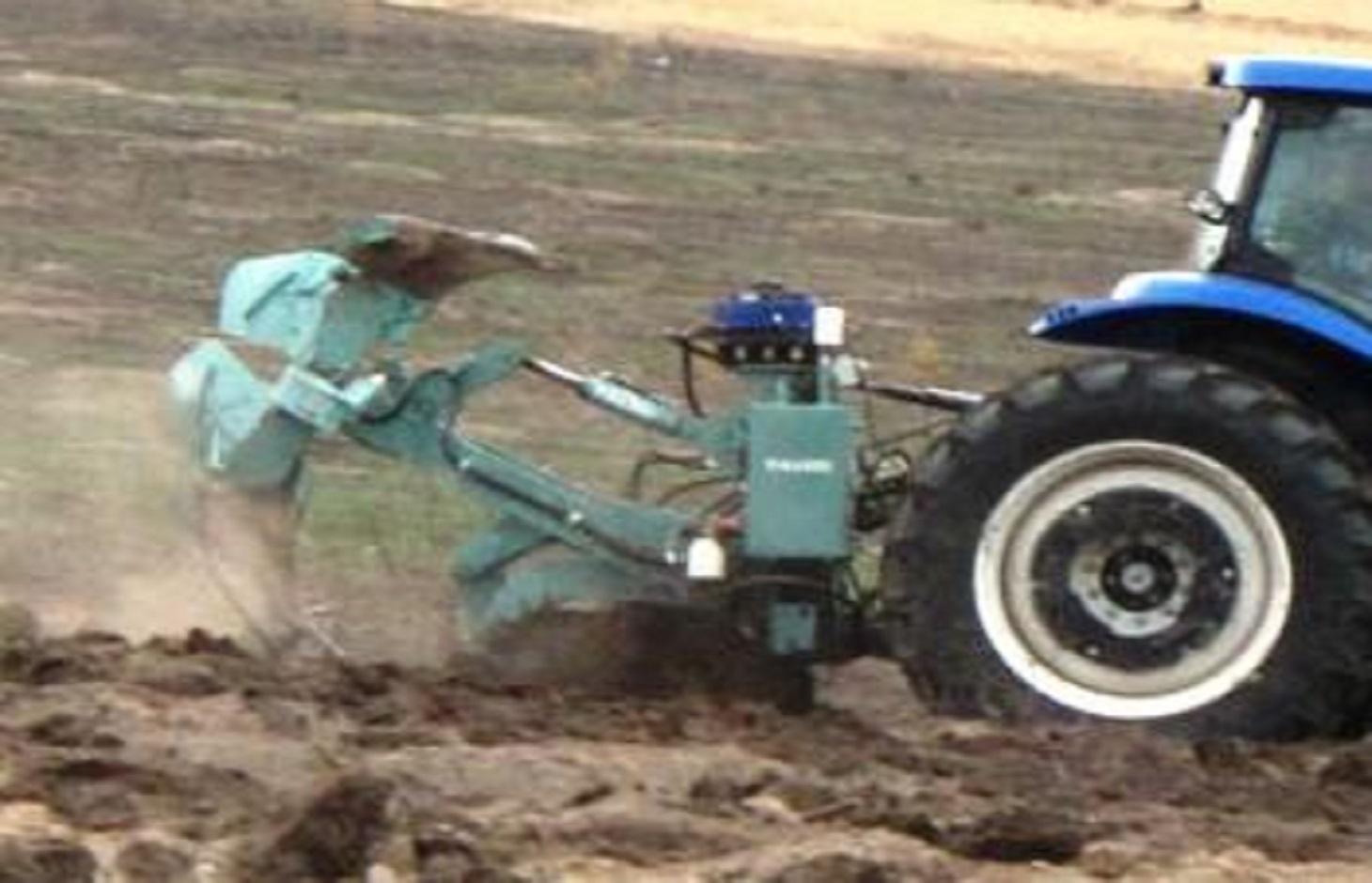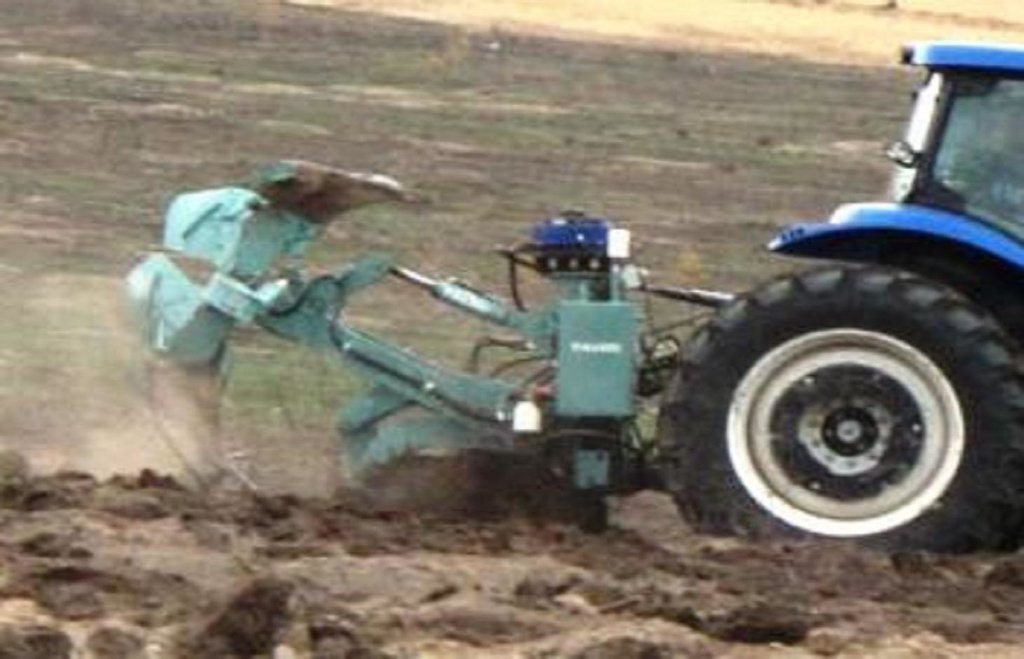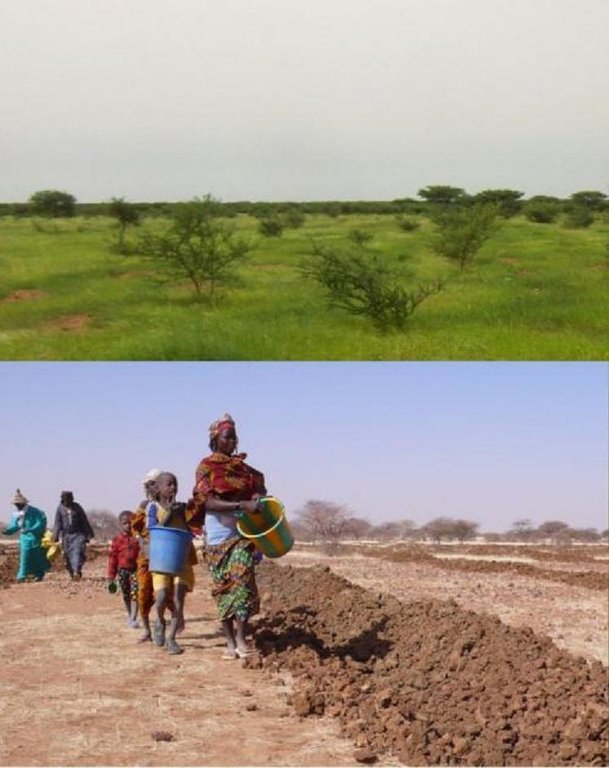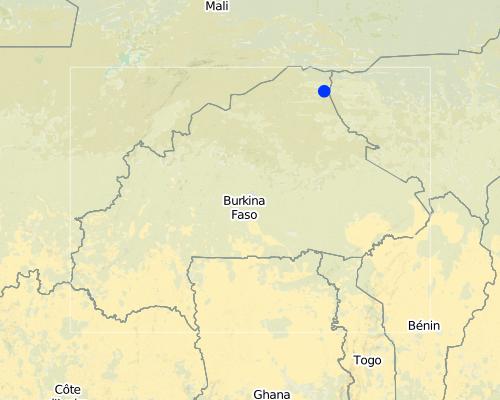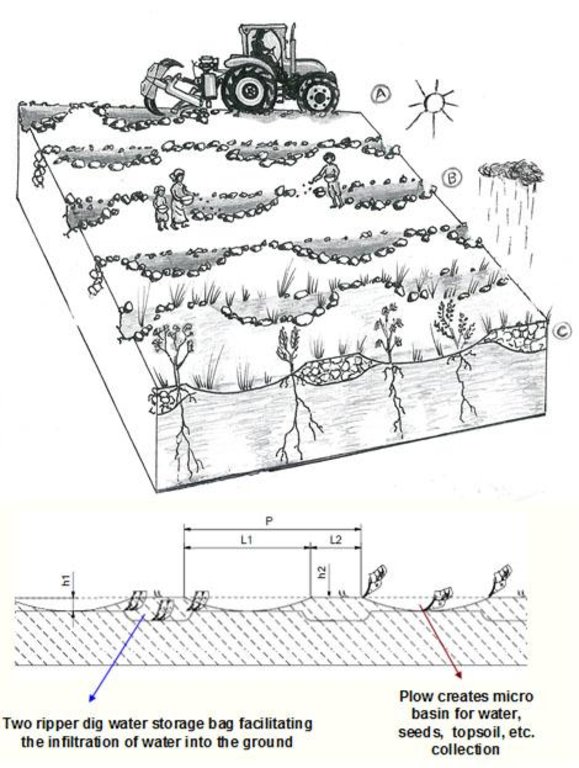Vallerani system [Буркина Фасо]
- Шинийг нээх:
- Шинэчлэх:
- Эмхэтгэгч: Sabina Galli Vallerani
- Хянан тохиолдуулагч: –
- Хянагч: Deborah Niggli
technologies_1528 - Буркина Фасо
- Бүрэн хураангуйн PDF хувилбар
- Бүрэн хураангуйг PDF-ээр хэвлэх
- Хөтөч дэх бүрэн хураангуй
- Бүрэн хураангуй (форматгүй)
- Vallerani System: 08 3-р сар 2019 (public)
- Vallerani System: 16 7-р сар 2018 (inactive)
- Vallerani System: 16 7-р сар 2018 (inactive)
- Vallerani System: 12 7-р сар 2018 (inactive)
- Vallerani System: 15 8-р сар 2018 (inactive)
- Vallerani system: 04 4-р сар 2018 (inactive)
- Vallerani system: 04 1-р сар 2017 (inactive)
Бүлгүүдийг үзэх
Бүгдийг дэлгэх Бүгдийг хаах1. Ерөнхий мэдээлэл
1.2 Технологийг үнэлэх, баримтжуулах ажилд хамаарах мэдээлэл өгсөн хүмүүс, байгууллагуудын холбоо барих мэдээлэл
1.3 ВОКАТ-аар баримтжуулсан өгөгдлийг ашиглахтай холбоотой нөхцөл
Мэдээллийг хэзээ (газар дээр нь) цуглуулсан бэ?
03/05/2012
Эмхэтгэгч болон гол мэдээлэгч хүн(хүмүүс) WOCAT аргачлалаар баримтжуулсан мэдээллийг ашиглахтай холбоотой нөхцлийг хүлээн зөвшөөрсөн:
Тийм
1.4 Технологи тогтвортой гэдгийг баталгаажуулах
Энэ технологийг газрын доройтлыг бууруулж, газрын тогтвортой менежментийг хангахад тохиромжтой гэж үзэж болох уу?
Үгүй
2. ГТМ Технологийн тодорхойлолт
2.1 Технологийн товч тодорхойлолт
Технологийн тодорхойлолт:
A special tractor-pulled plough that automatically constructs water-harvesting catchments, ideally suited for large-scale reclamation work.
2.2 Технологийн дэлгэрэнгүй тодорхойлолт
Тодорхойлолт:
The Vallerani implement is a modified plow named Delfino3, pulled by a heavy-duty tractor. A normal plow on flat land excavates a symmetrical furrow, and earth piles up equally on both sides of the furrow. The Delfino3 plow has a single reversible plowshare that creates an angled furrow and piles up the excavated soil only on the lower (downhill) side. This soil forms a ridge that stops or slows down runoff water as it flows downhill. The plow’s blade moves up and down (i.e. in and out of the soil), creating micro basins about 5 meters long, 50 cm deep and spaced about 2 m, each with a ridge. Two ripper placed before the plow work the soil to a depth of 70 cm, rise at the basin and descend between the basins. Thus to attain, in the stretch of land between the crescent, a collection bag which receives water from the crescents itself. Even with very low rainfall (150-500 mm/year) each micro-basin/storage bag can collect 1500 litres of water, including runoff. This water is protected against evaporation and remains available to plant roots and groundwater.
The Vallerani System is based on direct sowing of seeds of shrubs and trees of locally available, indigenous species. They are sown along the ridges of the basins and in the wake of the ripper. In the case study area Acacia tortilis, Ziziphus mauritania, Balanites aegyptiaca, Acacia senegal, Acacia seyal and Faidherbia albida have been sown. While for most species seeds can be collected by the local population, for species rarely present in the region, the seeds have to be purchased from tree nurseries. The use of goat excrements containing seeds has also proven successful (about 95% of all micro basin have at least one tree growing after 3 years) when directly sown. With more moisture available for a long time trees grow rapidly and the herbaceous cover improves in quality and in quantity - providing 20-30 times more livestock fodder (1000-2000kg dry herbaceous biomass ha/year), also helping to conserve the soil. The plowed and sown area is not protected by fences, grazing of animals shall be allowed so that villagers can benefit from the forage and reduce the accumulation of biomass fuel that would further the risk of fires in the dry season.
The Vallerani plow can ‘treat’ up to 20 ha, digging 5.720 micro basins, in a single day. The speed and effectiveness of the Delfino3 plow are its major advantages in the fight against desertification, but can also be its major limitation as to be able to make the best of it, it is necessary to find great availability of land to be reforested or cultivate. This is mainly possible related to a large public or business initiative. The spreading "like wildfire" that has characterized the case study was made possible by the presence on the territory of an NGO already active and rooted in the territory for many years and by perseverance, respect and competence of partner "of the North". Once the project has invested in the tractor and the plow (tractor ~ 70,000 EUR, plough ~ 40,000 EUR), the remaining cost of implementation – labour costs for local workers and drivers, fuel etc. amount to around EUR 125 / ha / year.
The case study area in the north east of Burkina Faso receives about 300-500 mm of annual rainfall. The soils of this agropastoral land are heavily degraded with a low tree density and an almost entirely absent herbaceous cover.
2.3 Технологийн гэрэл зураг
2.5 Энэ үнэлгээнд хамрагдсан технологийг хэрэгжүүлсэн улс орон/ бүс нутаг/ байршил
Улс:
Буркина Фасо
Улс/аймаг/сум:
Oudalan
Байршлын дэлгэрэнгүй тодорхойлолт:
Gorom-Gorom
Map
×2.6 Хэрэгжсэн хугацаа
Байгуулсан тодорхой оныг мэдэхгүй бол баримжаа хугацааг тодорхойл:
- 10-50 жилийн өмнө
2.7 Технологийн танилцуулга
Технологийг хэрхэн нэвтрүүлснийг тодорхойл:
- Туршилт/судалгааны үр дүн
3. ГТМ технологийн ангилал
3.1 Технологийн үндсэн зорилго (ууд)
- үйлдвэрлэлийг сайжруулах
- газрын доройтлыг бууруулах, сэргийлэх, нөхөн сэргээх
3.2 Технологи нэвтрүүлсэн газрын одоогийн газар ашиглалтын хэлбэр(үүд)

Бэлчээрийн газар
Бэлчээрийн мал аж ахуйн газар:
- Хагас нүүдлийн/ бэлчээрийн мал аж ахуй

Холимог (тариалан/бэлчээр/мод), үүнд. ХАА-н ойжуулалт
Тайлбар:
Major land use problems (compiler’s opinion): Land degradation-desertification with reduction of vegetation cover in terms of plant density and species diversity is the main problem: disappearance of grasses and trees, reduction of the size of the plants that are resistant and of the biological activity of the soil. Runoff, water and wind erosion increase. Drought and irregular precipitation have heavy consequences on soil fertility, availability of water for humans and livestock, and recharging groundwater.
3.3 Газар ашиглалтын тухай нэмэлт мэдээлэл
Технологи хэрэгжүүлсэн газрын усан хангамж:
- Байгалийн усалгаатай
Жилд ургамал ургах улирлын тоо:
- 1
Тодорхойлно уу:
Longest growing period in days: 90
3.4 Технологи ГТМ-ийн аль бүлэгт хамаарах вэ
- Ус хуримтлуулах
3.5 Технологийн хамрах талбай
Тайлбар:
Total area covered by the SLM Technology is 50 m2.
3.6 Технологийг бүрдүүлэх ГТМ арга хэмжээ

Ургамлын арга хэмжээ
- V1: Мод ба бут, сөөг
- V2: Өвс ба олон наст өвслөг ургамал

Барилга байгууламжийн арга хэмжээ
- S4: Тэгшилсэн ба шаталсан шуудуу, нүх

Менежментийн арга хэмжээ
- М2: Ашиглалтын менежмент/эрчимийг өөрчлөх
3.7 Технологид харгалзах газрын доройтлын төрөл

хөрс усаар эвдрэх
- Wt: Хөрсний гадаргын угаагдал
- Wg: Гуу жалгын элэгдэл

хөрс салхиар эвдрэх
- Et: Хөрсний гадаргын зөөгдөл

хөрсний химийн доройтол
- Cn: Үржил шим ба ялзмаг буурах (элэгдлийн шалтгаангүй)

хөрсний физик доройтол
- Pc: Хөрс дагтарших

биологийн доройтол
- Bc: Ургамлан нөмрөг багасах
- Bh: Амьдрах орчин доройтох
- Bs: Ургамлын чанар, төрөл зүйл, олон янз байдал буурах
Тайлбар:
Main causes of degradation: over-exploitation of vegetation for domestic use, overgrazing, change of seasonal rainfall, droughts
Secondary causes of degradation: deforestation / removal of natural vegetation (incl. forest fires), education, access to knowledge and support services
3.8 Газрын доройтлоос урьдчилан сэргийлэх, сааруулах ба нөхөн сэргээх
Газрын доройтолтой холбоотойгоор Технологи ямар зорилго тавьсан болохыг тодорхойл:
- Хүчтэй доройтсон газрыг нөхөн сэргээх/ сайжруулах
4. Техникийн нөхцөл, хэрэгжүүлсэн үйл ажиллагаа, материал ба зардал
4.1 Технологийн техник зураг
4.2 Техникийн үзүүлэлт/ техникийн зургийн тайлбар
Above:
A. The land chosen together with the local population is plowed with the special Delfino3 plow. B. Local people sow seeds (collected from local trees or bought if species are rare) or goat dung containing seeds (collected in the night enclosures after feeding the goats shaking trees with ripe seeds). C. The micro basins collect the rain that falls into the crescents and 50% of the runoff water. The water easily penetrates into the soil, fills the storage bags, remains available to plant roots and drains into the groundwater without risk of evaporation. Each micro basin/storage bag can collect up to 1.500 l of water.
Below
h1-Depth of the ploughshares work: =40/50 cm
Width of the micro basin: 40/50 cm
L1-Length of the micro basin, programmable: =3,5/5 m
h2 Depth of the rippers work: =50/80 cm
P-Total length of work: 4/8 m
Tractors horsepower 210/250 (150-198 Kw)
Working speed: 4/7 Km/h
Weight : 2000 Kg
Location: Oudalan, Gorom Gorom province. Burkina Faso
Technical knowledge required for field staff / advisors: high
Main technical functions: control of raindrop splash, improvement of ground cover, improvement of topsoil structure (compaction), stabilisation of soil (eg by tree roots against land slides), water harvesting / increase water supply, increase of biomass (quantity), promotion of vegetation species and varieties (quality, eg palatable fodder)
Secondary technical functions: increase in organic matter, increase in nutrient availability (supply, recycling,…), increase of infiltration, increase / maintain water stored in soil
Retention/infiltration ditch/pit, sediment/sand trap
Spacing between structures (m): 0.5
Depth of ditches/pits/dams (m): 2
Length of ditches/pits/dams (m): 5
Change of land use practices / intensity level
4.4 Бий болгох үйл ажиллагаа
| Үйл ажиллагаа | Арга хэмжээний төрөл | Хугацаа | |
|---|---|---|---|
| 1. | Project planning, consulting and training by VS and national experts | Барилга байгууламжийн | |
| 2. | Plowing with the Delfino special plow pulled by a 210hp tractor | Барилга байгууламжийн | Dry season |
| 3. | Seed harvesting can be done by local people either collecting them directly from plants or by shaking the plants at the appropriate time, to feed the goats and sheep with the fallen seeds and collect their dung in the night enclosure | Барилга байгууламжийн | |
| 4. | Missing seeds can be purchased in local markets or, if trees are too rare or if the species is no longer present, seeds must be purchased at a nursery | Барилга байгууламжийн | When seeds are ripe |
| 5. | Direct sowing | Барилга байгууламжийн | Dry season |
4.5 Бий болгоход шаардагдсан зардал, хөрөнгийн өртөг
| Зардлын нэр, төрөл | Хэмжих нэгж | Тоо хэмжээ | Нэгжийн үнэ | Зардал бүрийн нийт өртөг | Нийт дүнгээс газар ашиглагчийн төлсөн % | |
|---|---|---|---|---|---|---|
| Хөдөлмөр эрхлэлт | labour | ha | 1.0 | 72.0 | 72.0 | 50.0 |
| Тоног төхөөрөмж | machine use | ha | 1.0 | 23.4 | 23.4 | |
| Технологи бий болгох нийт үнэ өртөг | 95.4 | |||||
4.6 Арчилгаа/ урсгал үйл ажиллагаа
| Үйл ажиллагаа | Арга хэмжээний төрөл | Хугацаа/ давтамж | |
|---|---|---|---|
| 1. | No maintenance activities are required | Барилга байгууламжийн |
4.7 Арчилгаа/урсгал ажилд шаардагдсан зардал, хөрөнгийн өртөг (нэг жилд)
Тайлбар:
All data presented in the table refer to an ideal project which lasts 5 years with 3000 hectares plowed each year. All works are carried for economic retribution. Item number 1 refers to the planning, training and consulting engineers that has a strong impact on the cost per ha ($47). This voice would remain the same if 3 MTU (Mechanized Technical Unit) were used in the same area reducing its impact to $ 15,6 per ha.
4.8 Зардалд нөлөөлж байгаа хамгийн чухал хүчин зүйл
Өртөг, зардалд нөлөөлөх гол хүчин зүйл:
Upfront costs for the aquisition of the required materials are around 40,000 EUR for the plough and 70,000 EUR for the tractor.
5. Байгаль ба нийгмийн нөхцөл
5.1 Уур амьсгал
Жилийн нийлбэр хур тундас
- < 250 мм
- 251-500 мм
- 501-750 мм
- 751-1,000 мм
- 1,001-1,500 мм
- 1,501-2,000 мм
- 2,001-3,000 мм
- 3,001-4,000 мм
- > 4,000 мм
Хур тунадасны талаархи тодорхойлолт/ тайлбар:
400-600 mm
Агро-уур амьсгалын бүс
- хуурай
Thermal climate class: subtropics
5.2 Гадаргын хэлбэр
Дундаж налуу:
- хавтгай (0-2 %)
- бага зэрэг налуу (3-5 %)
- дунд зэрэг налуу (6-10 % )
- хэвгий (11-15 %)
- налуу (16-30 %)
- их налуу (31-60 % )
- эгц налуу (>60 %)
Гадаргын хэлбэр:
- тэгш өндөрлөг / тал
- нуруу
- уулын энгэр
- дов толгод
- бэл
- хөндий
Өндрийн бүслүүр:
- 0-100 д.т.д. м.
- 101-500 д.т.д. м.
- 501-1,000 д.т.д м.
- 1,001-1,500 д.т.д м.
- 1,501-2,000 д.т.д м.
- 2,001-2,500 д.т.д. м.
- 2,501-3,000 д.т.д. м.
- 3,001-4,000 д.т.д м.
- > 4,000 д.т.д. м.
5.3 Хөрс
Хөрсний дундаж зузаан:
- маш нимгэн (0-20 см)
- нимгэн (21-50 см)
- дунд зэрэг зузаан (51-80 см)
- зузаан (81-120 cм)
- маш зузаан (>120 cм)
Хөрсний бүтэц (өнгөн хөрс):
- бүдүүн/ хөнгөн (элсэрхэг)
Өнгөн хөрсөнд агуулагдах ялзмаг:
- бага (<1 % )
5.4 Усны хүртээмж ба чанар
Гүний усны түвшин:
> 50 м
Гадаргын усны хүртээмж:
сайн
Усны чанар (цэвэршүүлээгүй):
зөвхөн газар тариалангийн зориулалтаар ашиглах (усалгаа)
5.5 Биологийн олон янз байдал
Зүйлийн олон янз байдал:
- Бага
5.6 Технологи нэвтрүүлсэн газар ашиглагчдын тухай мэдээлэл
Бусад эх үүсвэрээс олох орлого:
- Нийт орлогын 10 %-иас доош
Хувь хүн эсвэл бүлэг:
- бүлэг / олон нийтийн
Хүйс:
- эмэгтэй
- эрэгтэй
Газар ашиглагчдын бусад шинж чанарыг тодорхойл:
Land users applying the Technology are mainly common / average land users
Difference in the involvement of women and men: The project involves the reforestation and reconstruction of the herbaceous layer for the grazing of livestock that are male dominated activities. Since 2010 women have sown special plants for medical use, domestic use and as raw material for crafts and protected them from grazing.
Population density: 10-50 persons/km2
Annual population growth: 3% - 4%
Off-farm income specification: The only activity people of the region are engaged in is goat and cattle breading. Crop production is practiced only for subsistence use.
5.7 Технологи нэвтрүүлсэн газар ашиглагчийн өмчилж буй, эзэмшиж буй, түрээсэлж буй эсвэл ашиглаж буй (ашиглах эрх) газрын талбай
- < 0.5 га
- 0.5-1 га
- 1-2 га
- 2-5 га
- 5-15 га
- 15-50 га
- 50-100 га
- 100-500 га
- 500-1,000 га
- 1,000-10,000 га
- > 10,000 га
Энэ талбай том, жижиг, дунд алинд хамаарах вэ (орон нутгийн нөхцөлд харгалзуулна уу)?
- бага-хэмжээний
5.8 Газар эзэмшил, газар ашиглах эрх, ус ашиглах эрх
Газар өмчлөл:
- төрийн
- нэгдлийн/ тосгон
Газар ашиглах эрх:
- нээлттэй хүртэх (зохион байгуулалтгүй)
- нэгдлийн хэлбэрээр (зохион байгуулалттай)
Ус ашиглах эрх:
- нээлттэй хүртэх (зохион байгуулалтгүй)
- нэгдлийн хэлбэрээр (зохион байгуулалттай)
5.9 Дэд бүтэц, үйлчилгээний хүртээмж
эрүүл мэнд:
- ядуу
- дунд зэргийн
- сайн
боловсрол:
- ядуу
- дунд зэргийн
- сайн
техник зөвлөгөө:
- ядуу
- дунд зэргийн
- сайн
хөдөлмөр эрхлэлт (жишээ нь, ХАА-аас өөр):
- ядуу
- дунд зэргийн
- сайн
зах зээл:
- ядуу
- дунд зэргийн
- сайн
эрчим хүчний хангамж:
- ядуу
- дунд зэргийн
- сайн
зам тээвэр:
- ядуу
- дунд зэргийн
- сайн
усан хангамж ба ариутгал:
- ядуу
- дунд зэргийн
- сайн
санхүүгийн үйлчилгээ:
- ядуу
- дунд зэргийн
- сайн
6. Үр нөлөө ба дүгнэлт
6.1 Технологийн талбайд үзүүлсэн нөлөө
Нийгэм-эдийн засгийн үр нөлөө
Үйлдвэрлэл
тэжээл үйлдвэрлэл
Тайлбар/ тодорхой дурьдах:
up to 30% more than before implementation
тэжээлийн чанар
модлогийн бүтээмж
ГТМ хэрэгжихээс өмнөх тоо хэмжээ:
50 trees/ha
ГТМ хэрэгжиснээс хойшхи тоо хэмжээ:
350 trees/ha
Нийгэм-соёлын үр нөлөө
хүнсний аюулгүй байдал/ өөрийн хэрэгцээг хангах
Тайлбар/ тодорхой дурьдах:
The technology can be applied for agriculture producing 2 to 4 times more than with traditional systems
эрүүл мэндийн байдал
Тайлбар/ тодорхой дурьдах:
No more malnutrition=better health!
соёлын боломжууд
амралт, рекреацийн боломжууд
Тайлбар/ тодорхой дурьдах:
More wood, fodder and water available= more time available
олон нийтийн институц
Тайлбар/ тодорхой дурьдах:
Old, young and woman work together for common benefits
үндэсний институц
Тайлбар/ тодорхой дурьдах:
Were applied on large scale
ГТМ/ газрын доройтлын мэдлэг
Тайлбар/ тодорхой дурьдах:
Environment education in theory and practice, is part of the system
маргааныг шийдвэрлэх
Тайлбар/ тодорхой дурьдах:
More fodder and water highly reduces conflict motivations
нийгэм, эдийн засгийн хувьд эмзэг бүлгийнхний нөхцөл байдал
Тайлбар/ тодорхой дурьдах:
Women have collected, sown and protected medicinal plants and plants for raw materials for handcrafts to sell at the market
Training of skilled labour in disadvantaged regions
Тайлбар/ тодорхой дурьдах:
Chance to find good jobs
contribution to human well-being
Тайлбар/ тодорхой дурьдах:
Thanks to the enormous increase of trees, pasture and crop production, the quality of life and health of men and animals have improved considerably.
Экологийн үр нөлөө
Усны эргэлт/ илүүдэл
ус хураах / цуглуулах
гадаргын урсац
гүний усны түвшин / уст давхарга
Хөрс
хөрсний чийг
хөрс алдагдах
хөрс нягтрах
шимт бодисын эргэлт/ сэргэлт
хөрсний органик нэгдэл/ хөрсөнд агуулагдах карбон
Биологийн олон янз байдал: ургамал, амьтан
газрын дээрхи / доорхи карбон
Уур амьсгал болон гамшгийн эрсдлийг бууруулах
түймрийн эрсдэл
Тайлбар/ тодорхой дурьдах:
Through the high soil cover with trees and grass fire risk increase, this is avoided through open access to grazing.
Экологийн бусад үр нөлөө
Increased threat from wild animals
Тайлбар/ тодорхой дурьдах:
Biodiversity highly increases, local people might be afraid of some animals coming back like jackal or snakes
6.2 Технологийн талбайн гадна үзүүлсэн үр нөлөө
голын адагт үерлэх
нийтийн/хувийн хэвшлийн дэд бүтцэд учрах хохирол
6.3 Технологийн уур амьсгалын өөрчлөлт, цаг агаарын гамшигт үзэгдэлд өртөх байдал ба эмзэг байдал (газар ашиглагчийн бодлоор)
Уур амьсгалын аажим өөрчлөлт
Уур амьсгалын аажим өөрчлөлт
| Улирал | Уур амьсгалын өөрчлөлт/экстрим үзэгдлийн төрөл | Технологи түүний нөлөөг хэрхэн бууруулж байна? | |
|---|---|---|---|
| жилийн дундаж температур | Өсөлт | сайн |
Уур амьсгалаас хамаарах аюул (гамшиг)
Цаг уурын гамшигт үзэгдэл
| Технологи түүний нөлөөг хэрхэн бууруулж байна? | |
|---|---|
| орон нутгийн аадар бороо | сайн |
| орон нутгийн салхин шуурга | сайн |
Уур амьсгалын гамшиг
| Технологи түүний нөлөөг хэрхэн бууруулж байна? | |
|---|---|
| ган гачиг | сайн |
Усзүйн гамшиг
| Технологи түүний нөлөөг хэрхэн бууруулж байна? | |
|---|---|
| усны үер (гол) | мэдэхгүй |
Уур амьсгалд хамаарах бусад үр дагавар
Уур амьсгалд хамаарах бусад үр дагавар
| Технологи түүний нөлөөг хэрхэн бууруулж байна? | |
|---|---|
| цргалтын хугацаа багасах | сайн |
6.4 Өртөг ба ашгийн шинжилгээ
Бий болгох зардалтай харьцуулахад ямар ашиг өгсөн бэ (газар ашиглагчийн бодлоор)?
Богино хугацаанд эргэн төлөгдөх байдал:
маш сөрөг
Урт хугацаанд эргэн төлөгдөх байдал:
маш эерэг
Арчилгаа/урсгал зардалтай харьцуулахад ямар ашиг өгсөн бэ (газар ашиглагчийн бодлоор)?
Богино хугацаанд эргэн төлөгдөх байдал:
сөрөг
Урт хугацаанд эргэн төлөгдөх байдал:
маш эерэг
6.5 Технологи нэвтрүүлэлт
- 50 -иас их %
Технологи нэвтрүүлсэн хүмүүсээс хэд нь өөрийн хүчээр технологийг хэрэгжүүлсэн бэ, өөрөөр хэлбэл гадны тусламж дэмжлэг авалгүйгээр?
- 0-10%
Тайлбар:
100% of land user families have adopted the Technology with external material support
Comments on acceptance with external material support: The system includes the use of a heavy duty tractor and a special plow whose costs are high though difficult to sustain by the local population. All correlated activities are done (or can be done) without external material support
There is a strong trend towards spontaneous adoption of the Technology
The system includes the use of a heavy duty tractor and a special plow whose cost is high though difficult to sustain by the local population. All other activities part of the system are practicable from the population under an initial guidance of someone with specific training. Where the technology is known there is active participation of local people and a strong demand for new interventions
6.7 Технологийн давуу тал/боломжууд
| Эмхэтгэгч, бусад мэдээлэл өгсөн хүмүүсийн өнцгөөс тодорхойлсон давуу тал/боломжууд |
|---|
| This practice allows for the rapid and efficient treatment of large degraded areas within a short time |
| The tree and shrub species planted are mainly indigenous and locally adapted species |
| Through its tillage process the Vallerani system offers the highest degree of efficiency in the first years from processing. Its effects last for a long time so it does not need to be repeated on the same site |
| The VS does not use any water (except rain) in countries where water is rare and precious. It further avoids the risk of soil salinisation. |
| The delfino3 can plow strongly degraded land, this makes that local people often ask to work their worse land |
6.8 Технологийн дутагдалтай/сул тал/аюул болон тэдгээрийг хэрхэн даван туулах арга зам
| Эмхэтгэгч, бусад мэдээлэл өгсөн хүмүүсийн өнцгөөс тодорхойлсон сул тал/ дутагдал/ эрсдэл | Тэдгээрийг хэрхэн даван туулах вэ? |
|---|---|
| The investment costs for the machinery are extremely high and cannot be covered by single land users or even communities | projects must be financed externally |
| The speed and effectiveness of the Delfino3 plow are its major advantages in the fight against desertification, but can also be its major limitation as to be able to make the best of it, it is necessary to find great availability of land to be reforested or cultivate | This is mainly possible related to a large public or business initiative. The spreading "like wildfire" that has characterized the case study was made possible by the presence on the territory of an NGO already active and rooted in the territory for many years and by perseverance, respect and competence of the partner "of the North" |
| Since great extentions will be processed, a big organisation is needed for all activities (awareness raising, collecting seeds, personnel training, logistics, etc), | this must be well organized and should operate already before starting plowing |
7. Ном зүй ба холбоосууд
7.1 Мэдээлэл цуглуулсан арга/эх үүсвэр
- Хээрийн уулзалт, судалгаа
- Газар ашиглагчтай хийсэн ярилцлага
7.2 Ном, хэвлэлийн ишлэл
Гарчиг, зохиогч, он, ISBN:
Conedera, M., N. Bomio-Pacciorini, et al. 2010. Reconstitution des écosystèmes dégradés sahéliens. Bois et Forêts des Tropiques 304(2).
Хаанаас авч болох вэ? Зардал?
http://www.vallerani.com/images/Reconstitution.pdf
Гарчиг, зохиогч, он, ISBN:
Akhtar Ali, Theib Oweis, Atef Abdul Aal, Mohamed Mudabbar, Khaled Zubaidi, and Adriana Bruggeman. 2006. The Vallerani Water Harvesting System. ICARDA Caravan No. 23.
Хаанаас авч болох вэ? Зардал?
http://www.vallerani.com/images/Caravan-23.pdf
Холбоос ба модулууд
Бүгдийг дэлгэх Бүгдийг хаахХолбоосууд
Холбоос байхгүй байна
Модулууд
Модуль байхгүй байна


